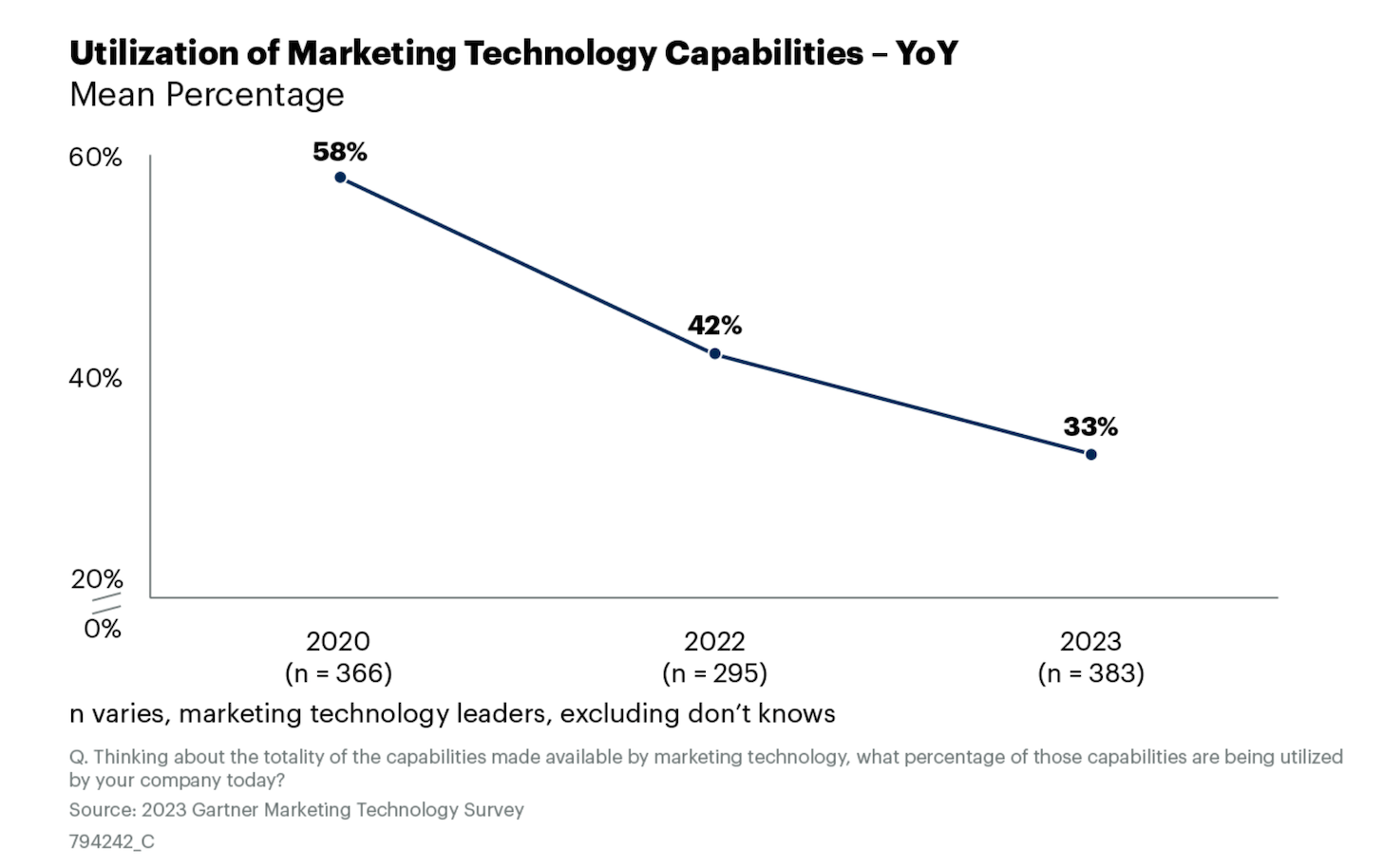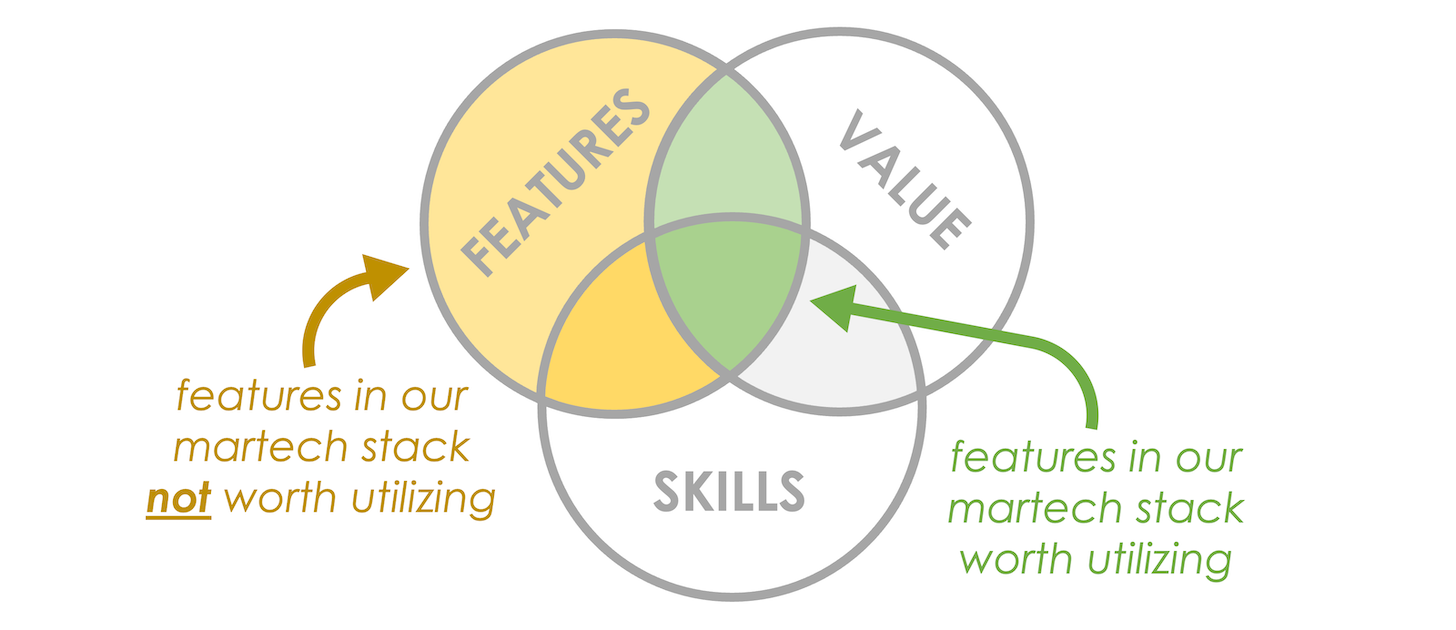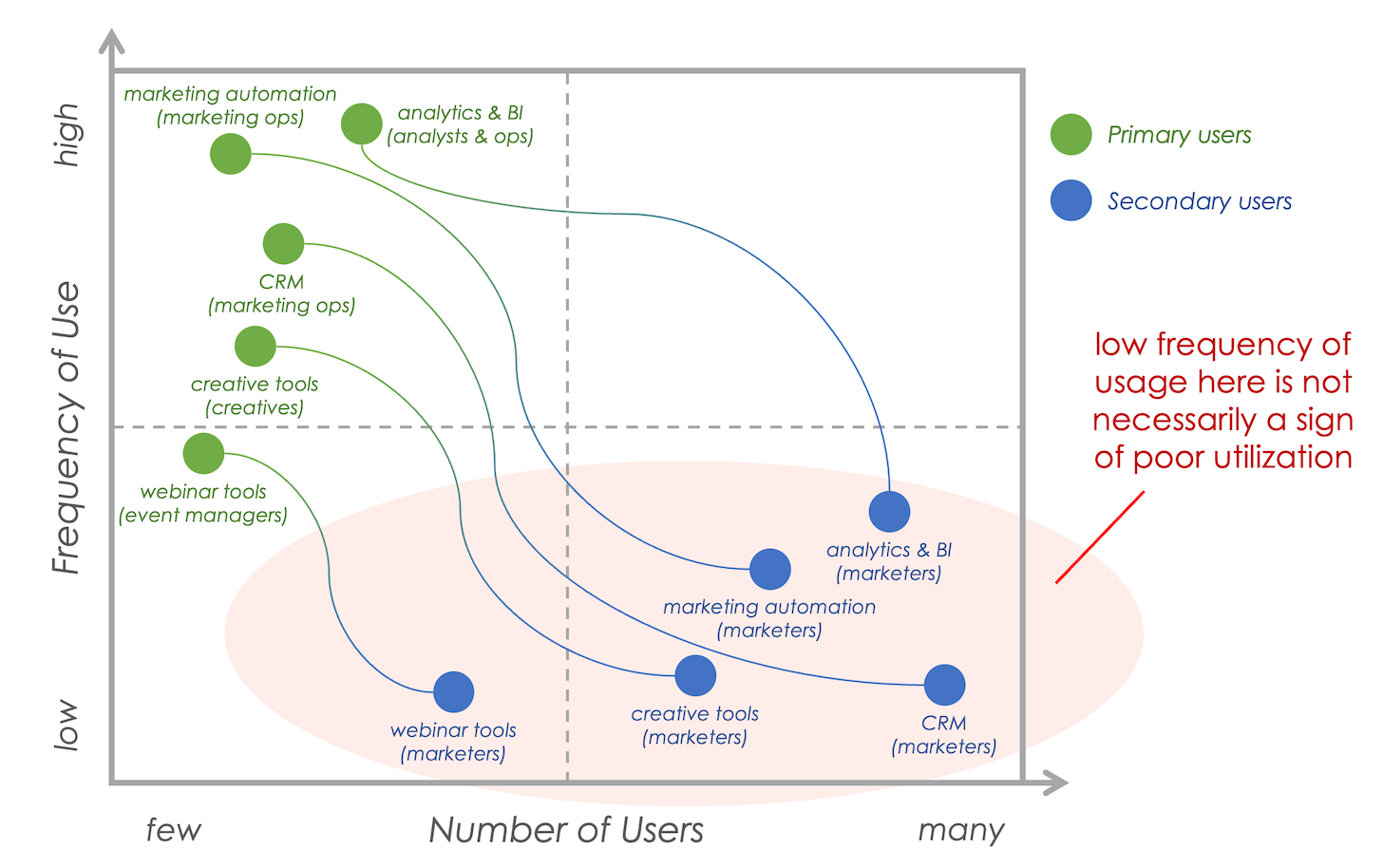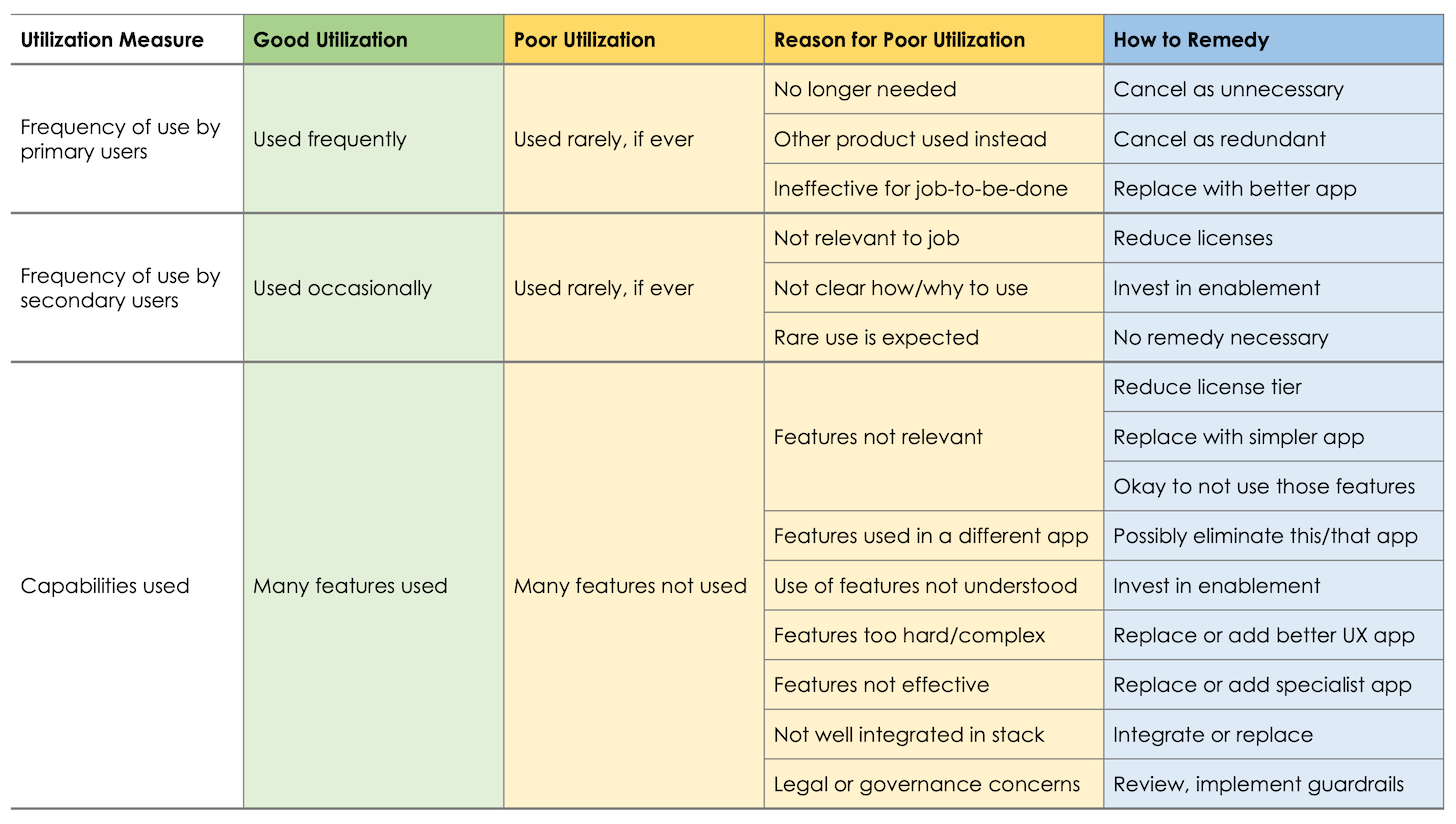
Martech utilization sucks. At least that’s the conclusion one draws from Gartner’s latest 2023 Marketing Technology Survey, which includes the above chart.
“Thinking about the totality of the capabilities made available by marketing technology, what percentage of those capabilities are being utilized by your company today?” The average response to that question has dropped steadily for the past four years, from 58% in 2020, to 42% in 2022, to a dismal 33% here in 2023.
Now, I confess, I find this a rather dubious measurement. How does one determine what percentage of their capabilities are being used? How does extent of usage or frequency of usage of a particular capability get factored into this? Is there any quantitative analysis being done here at all by respondents, or is it just gut feel? A Likert scale from 0 to 100?
You could also question of whether utilization of capabilities is even a metric that should matter? If a product gives you great ROI for the subset of features you use that are relevant to your business, does it really matter that other, less relevant features in that product are unused? It’s not like there’s any physical waste there.

As recently as last month, I questioned if martech underutilization is a myth.
But still. For hundreds of marketing technology leaders in Gartner’s survey to report that they’re only utilizing 1/3 of their martech stack’s capabilities — even if that’s just their gut feel — is a pretty disturbing signal. If it were a Likert scale of 1-10, like NPS, it would be a very unhappy “3”. Major detractor.
So I’ll set aside my beef about the methodology here and dive into some ideas about how to diagnose and remedy this martech utilization crisis.
Distinguishing Primary vs. Secondary Users
Before offering my rubric for such diagnosis, however, I want to draw a distinction between primary and secondary users of an application.
While “capabilities used” is a fuzzy measure of utilization, a more solid metric is frequency of use by the number of users who have a license/seat for that app.
When reviewing data about frequency of use in another report last month, it occurred to me that many apps have multiple segments of users in a company, each of which may have different usage patterns. Primary users of an app should be expected to use it frequently, while secondary users may use it infrequently — and such infrequent use for them may be perfectly okay. In fact, that may be the expected pattern of usage for them.
A few examples to make this concrete:

An analytics platform such as Looker might be used by analysts on a daily basis. But marketers might use it less frequently. A marketing ops pro might spend a lot of time in a CRM platform, aligning with sales ops or revops colleagues. But other kinds of marketers might only go into the CRM occasionally to look up a specific customer. A designer might often work in a particular creative tool, while other marketers might only use it when they need to access what the designer produced.
In other words, if you’re counting seats, not all seats are equal.
Makes sense, right?
We can also extend this primary vs. secondary user distinction to the range of an app’s capabilities used. Primary users might take advantage of a lot more advanced features within the product. Secondary users may not need those features — or may even be disallowed from using them.
Diagnosing Martech Utilization
We can now diagnose several different kinds of martech utilization metrics, consider the root causes of poor underutilization, and recommend how to fix them.

This is a simplified heuristic, of course. There’s a lot of nuance in evaluating utilization, especially with larger and more complex platforms. But hopefully this framework helps us talk more precisely about utilization challenges in our stacks and the options we have for resolving them.
Note that “do nothing” is a possible remedy, such as in cases where secondary users are only intended to work with the app infrequently. Or in cases where certain features simply aren’t relevant to your busiuness, but you otherwise love the app and are getting excellent value from it.
Probably the most underutilized remedy for underutilization — that’s a little meta — is investing in good enablement. Training, coaching, peer engagment, reference materials, managerial encouragement to experiment and learn, access to great help desk support, a culture of learning, etc., can all make a world of difference in the value you get out of your martech stack.
As Avinash Kaushik observed years ago, the 10/90 rule makes all the difference: invest 10% in your tools, 90% in your people.
Because utilization of talent that is the real thing you don’t want to waste.


